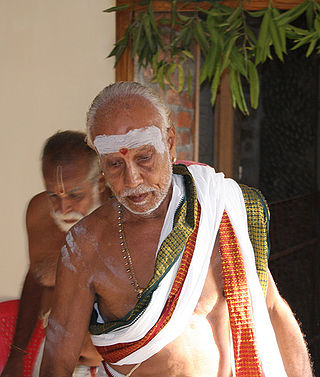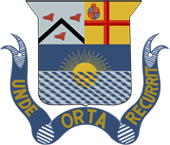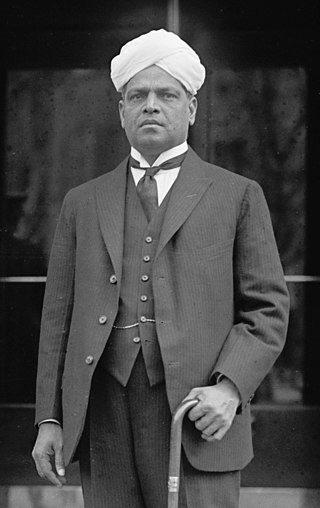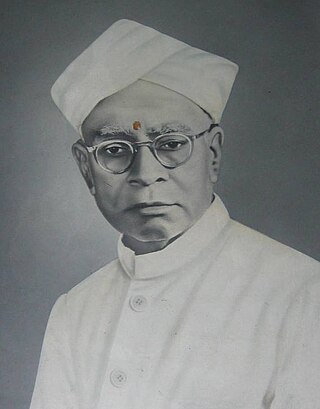
Iyers are an ethnoreligious community of Tamil-speaking Hindu Brahmins. Most Iyers are followers of the Advaita philosophy propounded by Adi Shankara and adhere to the Smarta tradition. This is in contrast to the Iyengar community, who are adherents of Sri Vaishnavism. The Iyers and the Iyengars are together referred to as Tamil Brahmins. The majority of Iyers reside in Tamil Nadu, India.

Presidency College is an art, commerce, and science college in the city of Chennai in Tamil Nadu, India. On 16 October 1840, this school was established as the Madras Preparatory School before being repurposed as a high school, and then a graduate college. The Presidency College is one of the oldest government arts colleges in India. It is one of two Presidency Colleges established by the British in India, the other being the Presidency College, Kolkata.

Iyengars are an ethnoreligious community of Tamil-speaking Hindu Brahmins, whose members follow Sri Vaishnavism and the Visishtadvaita philosophy propounded by Ramanuja. Found mostly in the Southern Indian states of Tamil Nadu, Karnataka, and Andhra Pradesh, Iyengars are divided into two denominations, the Vadakalai and the Tenkalai. The community belongs to the Pancha Dravida Brahmana classification of Brahmins in India.

Kumari Kandam is a mythical continent, believed to be lost with an ancient Tamil civilization, supposedly located south of present-day India in the Indian Ocean. Alternative names and spellings include Kumarikkandam and Kumari Nadu.

Chola Nadu is a cultural region of the Tamil Nadu state in southern India. It encompasses the lower reaches of the Kaveri River and its delta, and formed the cultural homeland and political base of the Chola Dynasty which ruled large parts of South India and parts of Sri Lanka between the 9th and 13th centuries CE. Uraiyur served as the early Chola capital, then medieval Cholas shifted to Thanjavur and later cholas king Rajendra Chola I moved the capital to Gangaikonda Cholapuram in Ariyalur in the 11th century CE.
The Justice Party, officially the South Indian Liberal Federation, was a political party in the Madras Presidency of British India. It was established on 20 November 1916 in Victoria Public Hall in Madras by Dr C. Natesa Mudaliar and co-founded by T. M. Nair, P. Theagaraya Chetty and Alamelu Mangai Thayarammal as a result of a series of non-Brahmin conferences and meetings in the presidency. Communal division between Brahmins and non-Brahmins began in the presidency during the late-19th and early-20th century, mainly due to caste prejudices and disproportionate Brahminical representation in government jobs. The Justice Party's foundation marked the culmination of several efforts to establish an organisation to represent the non-Brahmins in Madras and is seen as the start of the Dravidian Movement.

Valangaiman Sankaranarayana Srinivasa Sastri was an Indian politician, administrator, educator, orator and Indian independence activist. He was acclaimed for his oratory and command over the English language. Srinivasa Sastri was born to a poor temple priest in the village of Valangaiman near Kumbakonam, India. He completed his education at Kumbakonam and worked as a school teacher and later, headmaster in Triplicane, Madras. He entered politics in 1905 when he joined the Servants of India Society. Sastri served as a member of the Indian National Congress from 1908 to 1922, but later resigned in protest against the Non-Cooperation movement. Sastri was one of the founding members of the Indian Liberal Party. In his later days, he was strongly opposed to the partition of India.

Seshadri Srinivasa Iyengar CIE, also seen as Sreenivasa Iyengar and Srinivasa Ayyangar, was an Indian lawyer, freedom-fighter and politician from the Indian National Congress. Iyengar was the Advocate-General of Madras Presidency from 1916 to 1920. He also served as a member of the bar council from 1912 to 1920, the law member of Madras Presidency from 1916 to 1920 and as the president of the madras province Swarajya Party faction of the Indian National Congress from 1923 to 1930. Srinivasa Iyengar was the son-in-law of renowned lawyer and first Indian Advocate-general of Madras, Sir Vembaukum Bhashyam Aiyangar. Iyengar's followers called him Lion of the South.

Uttamadhanapuram Venkatasubbaiyer Swaminatha Iyer was a Tamil scholar and researcher who was instrumental in bringing many long-forgotten works of classical Tamil literature to light. His singular efforts over five decades brought to light major literary works in Tamil and contributed vastly to the enrichment of its literary heritage. Iyer published over 90 books in his lifetime, on a variety of matters connected to classical Tamil literature, and collected over 3,000 paper manuscripts, palm-leaf manuscripts and notes of various kinds.

Tamil Brahmins are an ethnoreligious community of Tamil-speaking Hindu Brahmins, predominantly living in Tamil Nadu, though they number significantly in Telangana, Andhra Pradesh, Kerala, Karnataka, in addition to other regions of India, as well as Sri Lanka. They can be broadly divided into two denominations: Iyengars, who are adherents of Sri Vaishnavism, and Iyers, who follow the Srauta and Smarta traditions.
Brahmin Tamil is the name of a dialect of Tamil traditionally spoken by Tamil Brahmins. The dialect, largely, uses Classical Tamil along with a heavy proportion of Sanskrit derivatives.

Sir Cattamanchi Ramalinga Reddy, also popularly known as Sir C. R. Reddy, was an educationist and political thinker, essayist and economist, poet and literary critic. He was a prominent member of the Justice Party and an ardent champion of the non-Brahmin movement, joining the movement to unite the non-Brahmin communities. He wrote his works in Telugu and English; these reveal his deep love for Indian classics and his learning in these texts, as well as the modernity of his outlook.

The Early Pandyas of the Sangam period were one of the three main kingdoms of the ancient Tamil country, the other two being the Cholas, and Cheras Dynasty. As with many other kingdoms around this period, most of the information about the Early Pandyas come to modern historians mainly through literary sources and some epigraphic, archaeological and numismatic evidence. The capital of the Early Pandyan kingdom was initially Korkai, Thoothukudi and was later moved to Koodal during the reign of Nedunjeliyan I. The kingdom lay to the south of the Maurya Empire of India.
Erode City Municipal Corporation is a civic administrative body that governs the City of Erode, India. The Corporation consists of a legislative body, headed by the City Mayor and an executive body headed by the Corporation Commissioner. The Corporation's headquarters is in the Municipal Corporation Building, Erode, near Panneer selvam Park.

Kallidaikurichi Aiyah Nilakanta Sastri was an Indian historian who wrote on South Indian history. Many of his books form the standard reference works on the subject. Sastri was acclaimed for his scholarship and mastery of sources and was a recipient of the third highest Indian civilian honour, the Padma Bhushan.
The Indian independence movement had a long history in the Tamil-speaking districts of the then Madras Presidency going back to the 18th century.

Ramanathapuram C. S. Murugabhoopathy, popularly referred to as CSM, was one of the most distinguished Mridanga maestros of the 20th century. He was a contemporary of Palghat Mani Iyer (1912–1981) and Palani Subramania Pillai (1908–1962). The three legends are revered as the "Holy Trinity of Mridanga".

P. S. Subrahmanya Sastri was a Sanskrit scholar, who also acquired mastery over Tamil language and literature. He was the first to translate Tolkāppiyam into English.
Vallal Pon Pandithurai Thevar, born Ukkira Pandian, also known as Pandi Durai Thevar, was the Zamindar of Palavanatham, Tamil Nadu, India. A scholar and poet belonging to the royal house of the Sethupathis of Ramanathapuram, Pandithurai Thevar contributed greatly to the revival of the Tamil language by establishing the Fourth Tamil sangam in Madurai, restoring rare Tamil texts, and becoming a patron of Tamil-language scholarship. He published the magazine Senthamizh as part of the Fourth Tamil sangam.